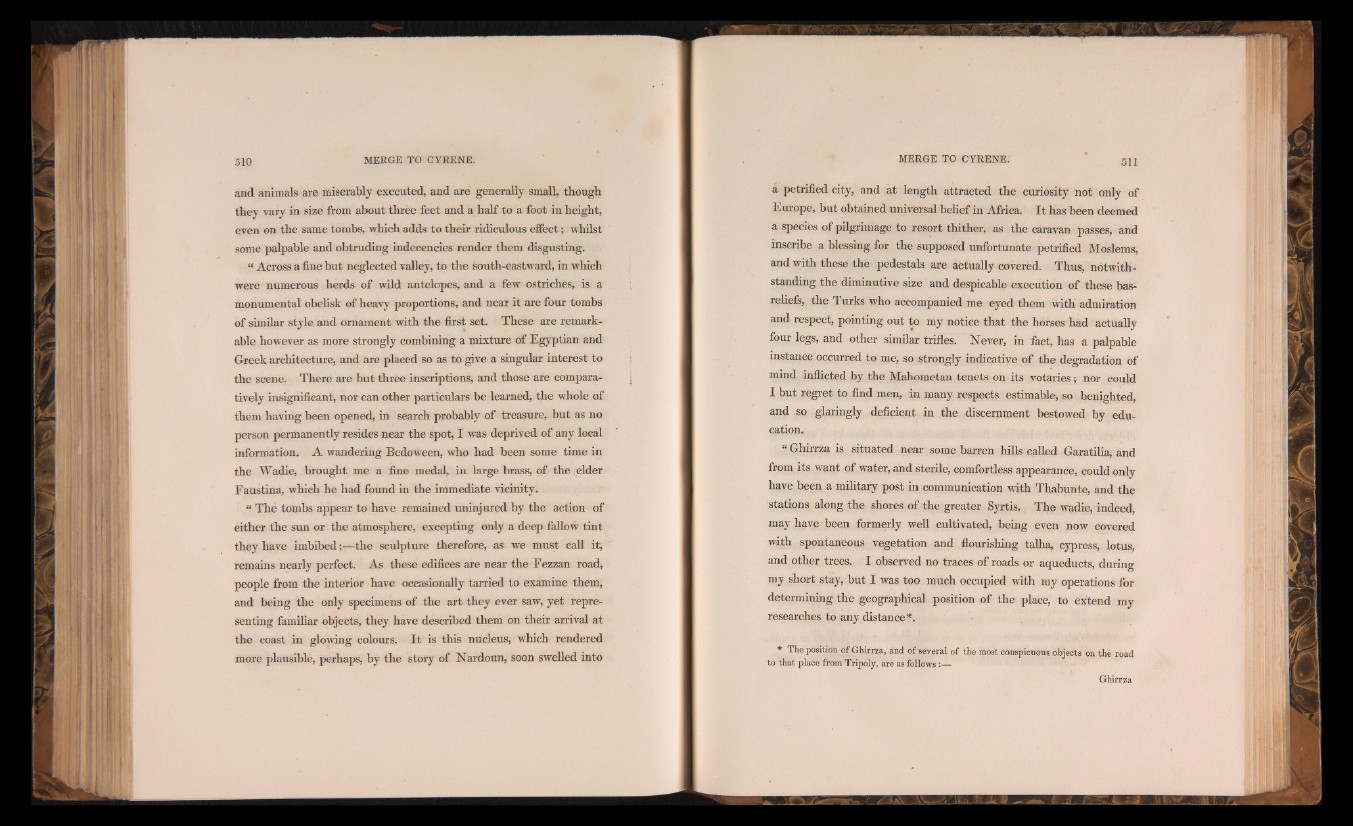
and animals are miserably executed, and are generally small, though
they vary in size from about three feet and a half to a foot in height,
even on the same tombs, which adds to their ridiculous effect; whilst
some palpable and obtruding indecencies render them disgusting.
“ Across a fine but neglected valley, to the south-eastward, in which
were numerous herds of wild antelopes, and a few ostriches, is a
monumental obelisk of heavy proportions, and near it are four tombs
of similar style and ornament with the first set. These are remarkable
however as more strongly combining a mixture of Egyptian and
Greek architecture, and are placed so as to give a singular interest to
the scene. There are but three inscriptions, and those are comparatively
insignificant, nor can other particulars be learned, the whole of
them having been opened, in search probably of treasure, but as no
person permanently resides near the spot, I was deprived of any local
information. A wandering Bedoween, who had been some time in
the Wadie, brought me a fine medal, in large brass, of the elder
Faustina, which he had found in the immediate vicinity.
“ The tombs appear to have remained uninjured by the action of
either the sun or the atmosphere, excepting only a deep fallow tint
they have imbibed;—the sculpture therefore, as we must call it,
remains nearly perfect. As these edifices are near the Fezzan road,
people from the interior have occasionally tarried to examine them,
and being the only specimens of the art they ever saw, yet representing
familiar objects, they have described them on their arrival at
the coast in glowing colours. I t is this nucleus, which rendered
more plausible, perhaps, by the story of Nardoun, soon swelled into
#
a petrified city, and at length attracted the curiosity not only of
Europe, but obtained universal belief in Africa. I t has been deemed
a species of pilgrimage to resort thither, as the caravan passes, and
inscribe a blessing for the supposed unfortunate petrified Moslems,
and with these the pedestals are actually covered. Thus, notwithstanding
the diminutive size and despicable execution of these bas-
reliefs, the Turks who accompanied me eyed them with admiration
and respect, pointing out to my notice that the horses had actually
four legs, and other similar trifles. Never, in fact, has a palpable
instance occurred to me, so strongly indicative of the degradation of
mind inflicted by the Mahometan tenets on its votaries; nor could
I but regret to find men, in many respects estimable, so benighted,
and so glaringly deficient in the discernment bestowed by education.
“ Gbirrza is situated near some barren hills called Garatilia, and
from its want of water, and sterile, comfortless appearance, could only
have been a military post in communication with Thabunte, and the
stations along the shores of the greater Syrtis, The wadie, indeed,
may have been formerly well cultivated, being even now covered
with spontaneous vegetation and flourishing talha, cypress, lotus,
and other trees. I observed no traces of roads or aqueducts, during
my short stay, but I was too much occupied with my operations for
determining the geographical position of the place, to extend my
researches to any distance*.
* The position of Ghirrza, and of several of the most conspicuous'objects on the road
to that place from Tripoly, are as follows:—